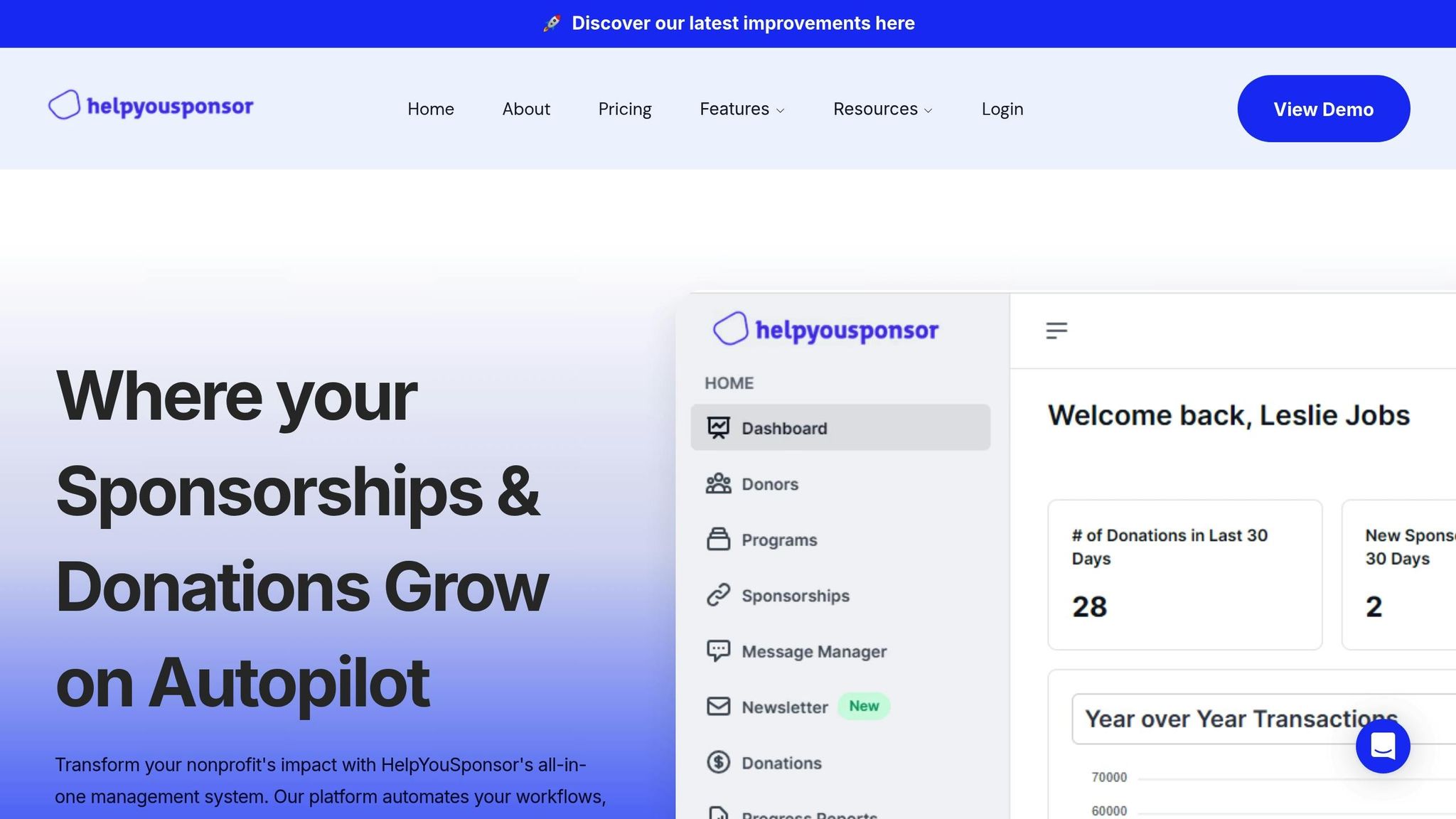Study: Effectiveness of Risk Tools in Child Protection
Explore how risk assessment tools enhance decision-making in child protection, highlighting their effectiveness, challenges, and implementation strategies.

Child protection agencies use risk assessment tools to improve decision-making and ensure children’s safety. These tools help caseworkers evaluate family situations consistently by analyzing risk factors like abuse history, substance use, and financial instability. While they don’t replace professional judgment, they provide a structured framework to guide decisions.
Key findings from the study include:
- Types of Tools: Tools fall into three categories - structured clinical judgment, actuarial models, and consensus-based methods. Each has strengths and limitations.
- Performance: Tools improve accuracy in predicting child abuse but often perform moderately. Combining multiple tools can address gaps.
- Challenges: Data quality, staff training, and organizational support heavily influence success. Bias in data and inconsistent implementation can limit effectiveness.
- Recommendations: Regular updates, staff training, and integrating tools into a broader decision-making framework are essential for better outcomes.
Nonprofits can use these insights to improve child sponsorship programs, ensuring children are protected while maintaining trust with stakeholders.
Distinguishing Safety and Risk in the Real World: A Key Skill at Every Stage in Child Welfare Work
Types of Risk Assessment Tools in Child Protection
Child protection agencies rely on three primary types of risk assessment tools, each offering a distinct approach to evaluating potential risks. Choosing the right tool plays a critical role in improving outcomes for children and families. Here's a closer look at these tools and how they address specific challenges in child protection.
Structured Clinical Judgment Tools
Structured clinical judgment tools strike a balance between professional expertise and standardized guidelines. These tools are designed to guide caseworkers through evaluating key risk factors, such as past abuse, parental mental health issues, or substance use. They provide a framework - like checklists and scoring guides - but leave room for professionals to interpret the findings based on each family's unique circumstances.
The flexibility of these tools is a major strength. While they ensure that critical factors aren't overlooked, they also allow caseworkers to consider family dynamics, cultural contexts, and other nuances that purely data-driven models might miss. This approach keeps the human element at the forefront, enabling more personalized and informed decisions.
By blending structure with professional judgment, these tools help caseworkers make consistent yet adaptable assessments, ensuring that no critical warning signs are ignored.
Actuarial Tools
Actuarial tools take a completely data-based approach to assessing risk. These tools use statistical models and algorithms to predict the likelihood of future harm, drawing insights from large datasets of past cases. Factors like a history of domestic violence or unstable housing are assigned numerical values, which are then combined to produce a risk score. Families are categorized into risk levels - low, moderate, or high - based on their final score.
The strength of actuarial tools lies in their consistency. Identical data inputs will always produce the same results, reducing the variability that can arise from individual judgment. They also excel at processing large amounts of information quickly, uncovering patterns that might not be obvious to human evaluators.
However, these tools have their limitations. They may struggle to account for unique family situations or cultural factors that fall outside the standard data patterns. Additionally, their effectiveness depends heavily on the quality and completeness of the data being used, as well as how closely the assessed population matches the one used to develop the tool.
Consensus-Based Tools
Consensus-based tools are developed through collaboration among child protection experts, blending research findings with practical experience. These tools often incorporate elements from both structured clinical judgment and actuarial methods. For instance, they might include clear guidelines for evaluating specific risk factors while still allowing professionals the discretion to weigh those factors based on the broader context.
One of the biggest advantages of consensus-based tools is their wide acceptance among child protection professionals. Because they are created through a collaborative process involving experienced practitioners, these tools are often trusted and more readily adopted by frontline workers. This trust can lead to greater consistency in how they are used.
Consensus-based tools also address a broad range of scenarios, reflecting the complexities of real-world child protection work. Unlike tools developed solely in academic settings or based purely on data, these tools benefit from the insights of professionals who understand the challenges faced in the field.
Finding the Right Balance
Each type of tool has its strengths and limitations, and many agencies find that using a combination of approaches provides the most comprehensive risk assessment. Factors like the availability of data, staff expertise, and the specific needs of the community often guide the choice of which tools to use. By tailoring their approach, agencies can better meet the diverse challenges of child protection work.
Research Results: How Well Do These Tools Work
When it comes to child protection, understanding how well risk assessment tools perform is essential. Recent studies shed light on their predictive accuracy and practical applications, uncovering both their strengths and their shortcomings.
Accuracy Measurements
To evaluate risk tools, researchers often use statistical measures like the Area Under the Curve (AUC), which indicates how effectively a tool predicts future harm. While these tools generally perform better than random guessing, their predictive accuracy is often only moderate. Additional metrics, such as sensitivity (how well the tool identifies children at risk) and specificity (how accurately it rules out children not at risk), are also used to measure their overall performance. These benchmarks help provide a clearer picture of how these tools function in real-world situations.
Comparing Tool Performance
Different tools bring different strengths to the table. Clinical judgment tools, for instance, are particularly useful in handling complex cases where nuanced decision-making is needed. On the other hand, actuarial tools - those relying on statistical models - are known for delivering consistent results, especially in high-volume situations. Consensus-based tools, which incorporate expert opinions, are often more widely embraced by frontline workers. However, no single tool emerges as the ultimate solution for every situation. This has led many child protection agencies to explore hybrid approaches, combining the strengths of multiple methods for better results.
Study Limitations and What They Mean
Despite their promise, research on these tools has its limitations. Many studies rely on small sample sizes or short follow-up periods, which can make it hard to apply findings broadly. Even the best tools occasionally produce false positives or negatives, underscoring the importance of regular case monitoring. Additionally, differences in how tools are implemented - such as variations in training and support - can significantly impact their effectiveness. These findings highlight the importance of using risk assessment tools as part of a larger decision-making framework, rather than depending on them as standalone solutions.
What Affects How Well These Tools Work
Several factors play a role in determining how effective risk assessment tools are. Everything from the quality of the data being used to the level of staff training can influence whether these tools improve decision-making or create new challenges. For organizations aiming to implement these systems successfully, understanding these variables is essential. Below, we'll break down the key elements that shape how well these tools perform in practice.
Data Quality and Context Factors
At the heart of any risk assessment tool is the data it processes. If the data is incomplete, outdated, or just plain inaccurate, the tool's predictions are likely to miss the mark. This makes the quality of data a critical starting point.
Another important consideration is the context in which the tool is used. Many risk assessment tools are built using data from specific populations, which means they may not perform as well when applied to different groups. For example, a tool designed with urban populations in mind might struggle to provide accurate results in rural areas, where family dynamics, economic conditions, and social support systems can be vastly different.
Bias in data collection also poses a significant challenge. Historical data used to train these tools often reflects existing inequalities in child protection systems. When this biased data feeds into the tool, it can end up reinforcing or even worsening discriminatory practices. This could lead to certain communities or families being unfairly targeted.
Timing is another factor that can’t be ignored. Risk factors within families can shift quickly, especially during a crisis. A risk assessment conducted weeks or months earlier may no longer reflect the current reality. Tools that fail to account for these rapid changes can end up providing caseworkers with outdated or misleading guidance.
Organization and Training Factors
Beyond the data itself, the way an organization integrates these tools into its operations can make or break their effectiveness. For instance, organizational culture plays a big role. If staff see these tools as just another layer of bureaucracy rather than a helpful resource, they’re less likely to use them correctly or trust their results.
Training is key. Caseworkers need more than just a basic understanding of how to operate these tools - they also need to grasp their limitations and know how to interpret the results thoughtfully. Without proper training, staff might either rely too heavily on the tool’s output or dismiss it entirely when it conflicts with their professional judgment.
High workloads can also undermine the effectiveness of these tools. When caseworkers are juggling too many cases, they might rush through assessments or skip critical steps. On top of that, tools that don’t integrate smoothly with existing case management systems can create extra administrative headaches, leading to incomplete or delayed assessments.
Finally, leadership support is crucial. When supervisors and administrators actively back the use of these tools and provide ongoing support, staff are more likely to adopt them and use them effectively.
Why Regular Review Matters
Risk assessment tools aren’t static - they need regular updates to stay effective. Over time, populations change, new risk factors emerge, and organizational practices evolve. Without regular monitoring and updates, these tools can lose their predictive accuracy.
Periodic validation studies are essential to ensure the tools are still performing as intended. This involves comparing the tool’s predictions with actual outcomes over time and making necessary adjustments to algorithms or thresholds. Regular updates also help prevent unintended consequences, like reinforcing disparities in service provision or causing inappropriate family interventions.
Feedback from frontline workers is another critical piece of the puzzle. Caseworkers often spot practical issues that might not show up in the data. Creating channels for them to share this feedback with tool developers can lead to meaningful improvements.
The changing landscape of child protection further underscores the need for regular reviews. As new research emerges, family structures evolve, and social challenges shift, the criteria and scoring methods used by these tools may need to be adjusted to stay relevant.
Finally, regular reviews can help organizations catch and address unintended consequences early. For example, if a tool is found to increase disparities or lead to unnecessary interventions, these issues can be corrected before they become deeply ingrained in the system. By staying proactive, organizations can ensure these tools remain effective and equitable over time.
What This Means for US Nonprofits and Child Sponsorship Programs
The research findings on risk assessment tools offer valuable insights for US nonprofits managing child sponsorship programs. These organizations face the dual challenge of safeguarding children effectively while maintaining the trust and transparency donors expect. Using these tools wisely can help nonprofits strike the right balance - ensuring children are protected without creating unnecessary hurdles or overlooking critical warning signs. With this in mind, nonprofits can adopt practical strategies drawn from the research to improve their efforts.
How to Implement Risk Tools Effectively
For nonprofits in the US, integrating risk assessment tools requires a thoughtful approach that aligns with federal regulations and considers the diverse communities they serve. The Child Abuse Prevention and Treatment Act (CAPTA) provides foundational guidelines, but going beyond compliance is key to creating systems that truly protect children.
Start by organizing and standardizing the data you already collect - such as application details, progress reports, and regular check-ins. This data can serve as a foundation for structured risk assessments. Think about what indicators you’re already tracking and how they might reveal potential risks or protective factors.
Choose tools that match your organization’s size and resources. Smaller nonprofits may benefit from simple, structured forms, while larger organizations might opt for more advanced actuarial models that require specialized training and ongoing support.
Address potential biases by validating tools across different demographic groups. This is especially important for organizations working with immigrant families, where language barriers or unfamiliar family structures could be misinterpreted as risks.
Develop clear response protocols for each risk level. Having a tool is only useful if your team knows how to act on its findings. Create specific plans for scenarios like increasing monitoring, offering additional family support, or reporting concerns to local authorities.
Finally, set up regular reviews to assess how well the tools are working. Track whether they’re identifying real risks and whether your interventions are making a difference. This ongoing evaluation ensures the tools remain effective and relevant to your program’s needs.
How Platforms like HelpYouSponsor Can Help

Technology can play a big role in making risk assessment tools more effective. Platforms like HelpYouSponsor offer features that help nonprofits build strong child protection systems while staying efficient.
One key feature is the ability to track each child’s situation over time. This kind of longitudinal data collection helps staff spot patterns and changes that might signal emerging risks. Instead of relying on one-off assessments, nonprofits can form a more complete picture of a child’s circumstances.
Automated reporting is another helpful tool. It ensures consistent assessments and flags cases with concerning trends. This reduces the chance of high-risk situations being missed due to staff shortages or heavy workloads.
The platform’s integrated messaging system improves communication between field staff, program managers, and child protection specialists. When risks are identified, quick and coordinated responses are crucial - especially for organizations working across multiple locations or countries.
Data security features are also vital. Child protection involves sensitive information, and HelpYouSponsor includes safeguards to keep data confidential while ensuring authorized staff can access what they need.
Additionally, the platform’s reporting tools make it easier to review and validate risk assessment processes. Nonprofits can generate reports to track outcomes, measure intervention success, and monitor long-term child welfare indicators.
Improving Results Through Combined Approaches
The research shows that risk assessment tools are most effective when paired with other safeguarding strategies. For US nonprofits, this means creating comprehensive systems that combine multiple approaches.
Invest in ongoing staff training to ensure risk assessments are used correctly. This includes cultural competency training to help staff distinguish between genuine risks and differences tied to cultural norms.
Build partnerships with local child protection agencies. Nonprofits operate within a complex network of state and local services, each with its own procedures. Establishing relationships with these agencies ahead of time makes it easier to collaborate when serious concerns arise. Regular communication also helps nonprofits align their assessments with official standards.
Create feedback loops between different assessment methods. Combine formal tools with regular team discussions about individual cases. These conversations can uncover context that standardized tools might miss, while also validating or questioning the tool’s findings.
Adopt flexible assessment practices. Risk levels can shift quickly due to family crises, economic changes, or new caregivers. Train staff to reassess risks whenever circumstances change, rather than sticking to rigid schedules.
Lastly, use technology to support - not replace - human judgment. The best systems blend the objectivity of structured tools with the insights and relationship-building skills of experienced staff. Platforms like HelpYouSponsor make it easier to gather and analyze data while leaving room for professional observations.
Track outcomes and refine your approach. Don’t just measure whether assessments are being completed - look at whether they’re leading to better results for children. This might include metrics like school attendance, health improvements, family stability, or long-term achievements. Use this data to adjust both your tools and your intervention strategies as needed.
Conclusion: Main Findings and Next Steps
Key Research Findings
When used properly, risk assessment tools can significantly enhance child protection efforts. Among these, structured clinical judgment tools stand out by combining objective data with professional expertise. However, their success hinges on several factors: access to reliable data, thorough training for staff, and clearly outlined protocols.
The research highlights the need to validate these tools across diverse demographic groups to reduce potential biases - an essential step for nonprofits in the U.S. that serve varied communities. Technology platforms can play a supportive role by complementing professional judgment and fostering stronger relationships, rather than replacing human input.
These insights pave the way for practical recommendations aimed at improving child welfare practices and guiding future research.
Recommendations for Future Research and Practice
To build on these findings, future research should focus on how these tools perform across different cultural and organizational settings. While much of the current research centers on traditional child welfare agencies, it’s important to study their effectiveness in alternative environments and over extended periods.
A phased approach is recommended. Start with structured data collection, provide staff with comprehensive training, and establish clear protocols. Once these foundations are in place, organizations can transition to more advanced methods, incorporating regular evaluations to ensure better outcomes for children.
Risk assessment must be seen as an ongoing process that evolves alongside community needs and regulatory changes. As tools and practices adapt, long-term studies could evaluate whether early detection leads to sustained improvements in child well-being. Additionally, examining cost-effectiveness would help nonprofits allocate their resources more strategically, ensuring they can deliver the greatest impact.
FAQs
How do risk assessment tools ensure cultural fairness and reduce bias in child protection cases?
Risk Assessment Tools in Child Protection
Risk assessment tools in child protection are designed to promote fairness and minimize bias by incorporating practices that are sensitive to different cultural contexts. These tools acknowledge the significance of cultural identity as a protective factor, ensuring that assessments respect and reflect the diverse needs of various communities, including tribal populations. This approach helps maintain fairness and effectiveness when evaluating risks.
Equally important is equipping practitioners with training in cultural humility and awareness. By understanding and addressing implicit biases, professionals can make decisions that are both more accurate and equitable. Together, these measures strive to create a more inclusive and balanced system for protecting children across all cultural backgrounds.
What are the main challenges in using risk assessment tools effectively in child protection agencies?
Implementing risk assessment tools within child protection agencies isn’t always straightforward. Practical challenges like tight schedules, overwhelming caseloads, and hesitation toward organizational changes often hinder consistent and effective use of these tools by staff.
On top of that, systemic issues add another layer of difficulty. Outdated protocols, doubts about the accuracy of the tools, and organizational cultures resistant to evidence-based approaches can all undermine the potential of these tools to improve outcomes for children and families.
Overcoming these hurdles calls for a clear focus on training, revising outdated policies, and creating an environment that prioritizes ongoing improvement and forward-thinking practices in child protection.
How can nonprofits use risk assessment tools to improve child safety in sponsorship programs?
Nonprofits have the opportunity to boost child safety by using risk assessment tools designed to spot and address potential dangers at crucial points in their programs. For instance, structured decision-making systems allow for consistent risk evaluations, while AI-powered digital tools can actively monitor and highlight emerging issues as they happen.
For these efforts to succeed, it’s essential to offer thorough staff training on safeguarding policies and foster an environment where discussing risks is encouraged. By blending advanced technology with vigilant human oversight, organizations can build a more secure space for children within their sponsorship programs.

